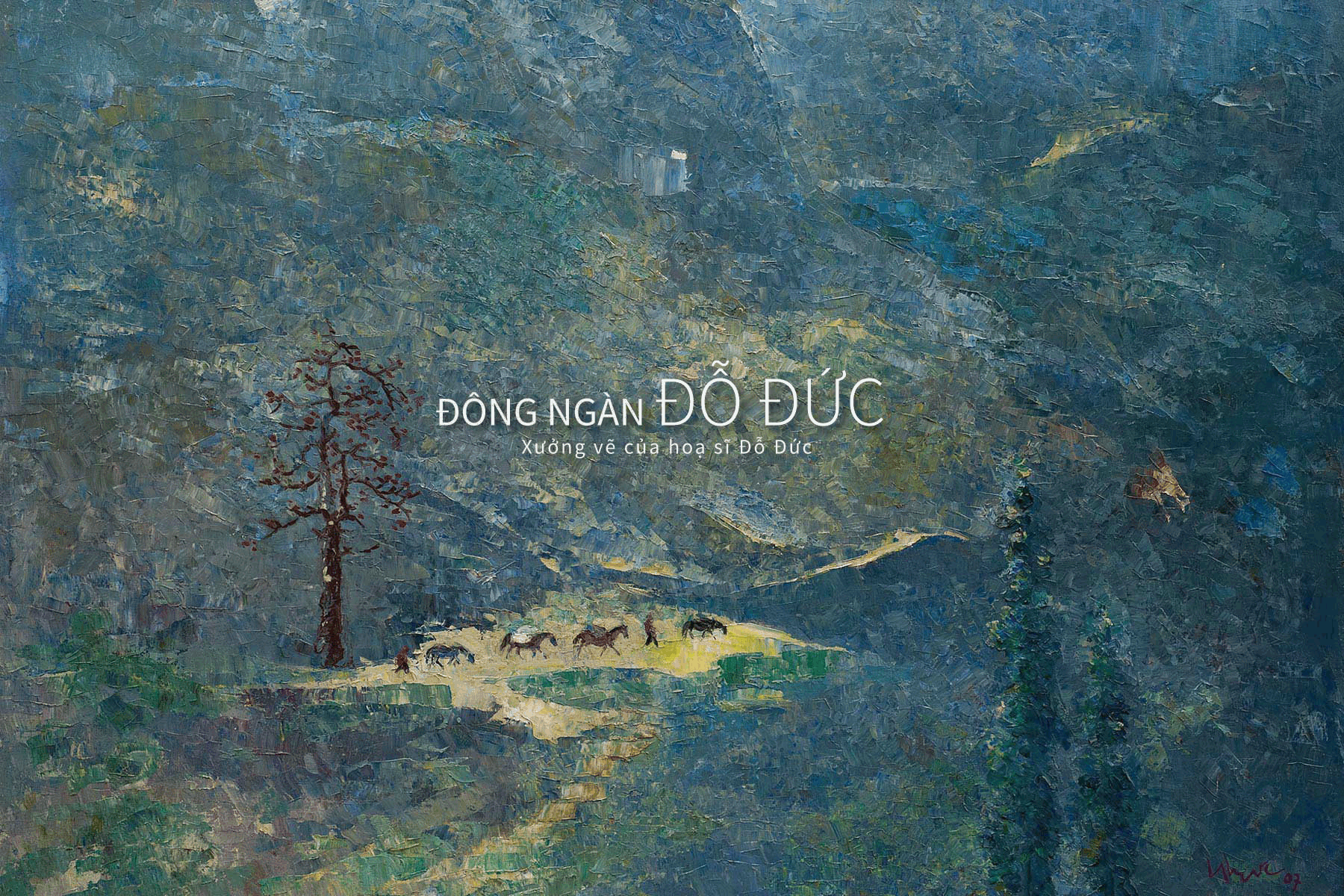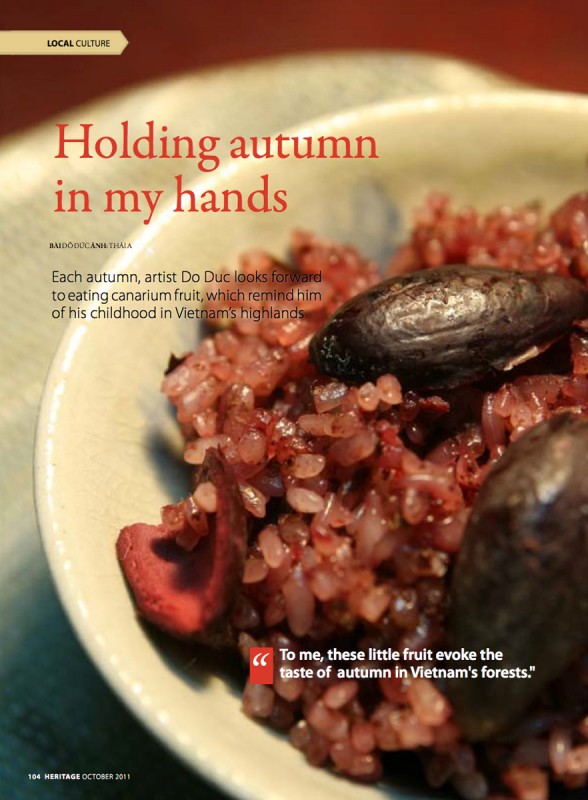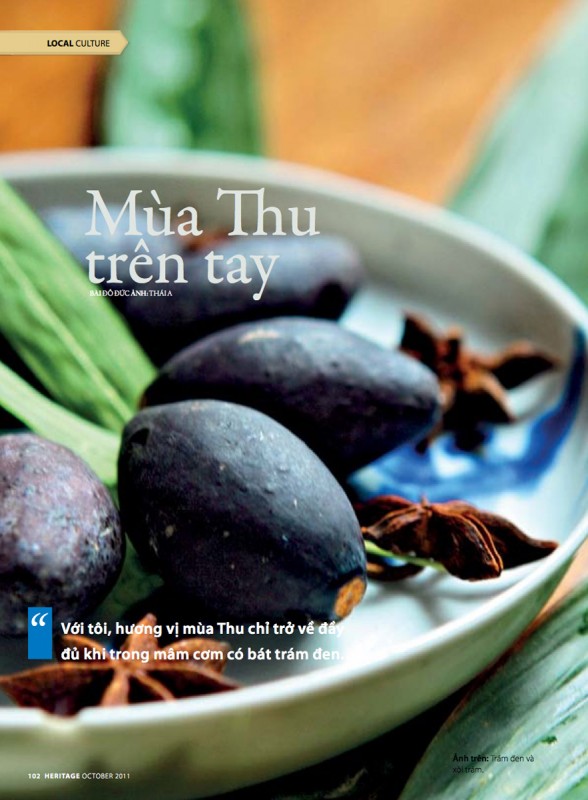Published on Heritage (2011).
Bài viết Tiếng Việt, vui lòng xem ở đây HERE (Mùa thu trong tay).
For the scanned version (English-Vietnamse), please check this out.
Each autumn, artist Do Duc looks forward to eating canarium fruit, which remind him of his childhood in Vietnam’s highlands
Having lived in Hanoi for decades, I always wait for autumn, the season of canarium fruit, a small fruit that resembles a large olive and is sometimes referred to as “Chinese olive”. To me, these little fruit evoke the taste of autumn in Vietnam’s forests.
A few days ago, I went to the market and saw canarium fruit for sale. Looking at these little fruit, which grow on canarium trees in the forest, I knew that autumn had arrived.
The poet Hoang Cam once wrote:
“Someone who went back to the far bank of Duong River
Would remember the lotus faces
Of the vendor girls with dyed teeth
Smiling in the shining autumn sun…”
While Hoang Cam celebrated autumn’s golden light, to me, autumn is associated with the buttery and slightly acrid taste of black canarium fruit. This fruit reminds me of autumn in the once-poor hill station where I grew up.
As the sun lost its intensity and the nights grew cool, these fruit flooded my village’s market. My mother would buy heaps of canarium to preserve in a big ceramic jar and serve them for an entire week’s worth ofmeals. Our eyes would light up when the first bowl of deseeded canarium fruit appeared, ready to be eaten with young rice. It is only in my home village that these fruit are offered to the souls of wandering ghosts on the 15th day of the seventh lunar month, along with sweet potatoes, congee and popcorn.
This autumn, I bought about a hundred fruit from an old vendor (we count the number of the fruit rather than by the weight). I salted them for half a day before deseeding them. The best fruit has lot of meat and tiny seeds. The thinner ones have a sour taste. Not everybody knows how to cook canarium fruit properly. If they aren’t properly salted they can become hard, chewy and bitter. Well-prepared canarium fruit are buttery and meaty.
Today, the jungle is shrinking fast. Canarium trees are not shedding their fruit like they did before. Without enjoying freedom, they cannot produce bumper crops. A friend of mine once compared canarium trees to writers. For many years now, the old trees no longer shower paths with golden leaves as the cicadas sing, as described in To Huu’ poems. Is this an outcome of climate change? Or has the demise of famous poets resulted in these trees turning stubborn
In the middle of a bustling market I suddenly felt melancholy. To native Hanoians, the taste of autumn might rest in young green sticky rice. But to me, autumn is found in the taste of canarium fruit. Holding them in my hands, autumn is really tangible
More to read


